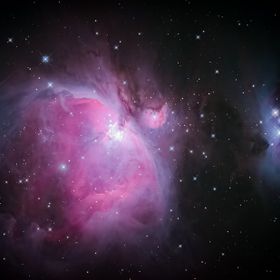

aaronncollier
FollowVery powerful and widespread storms hit much of Kern County in California on October 14th and 15th 2015, bringing thousands of lightning strikes and heavy rains...
Read more
Very powerful and widespread storms hit much of Kern County in California on October 14th and 15th 2015, bringing thousands of lightning strikes and heavy rains that caused flash floods.
Read less
Read less
Views
677
Likes
Awards
Winner in Lightning in All its Glory Photo Challenge
Peer Award
Top Choice
Absolute Masterpiece
Magnificent Capture
Superb Composition
All Star
Outstanding Creativity
Superior Skill
Genius
Top Ranks
Categories
Same photographer See allBehind The Lens
Discover more photos See all
Behind The Lens
Location
This photo was taken about 25 miles south of Bakersfield in Kern County, California. I was situated on a gradual slope just north of the San Emigdio mountain range about 700 feet above the rest of the valley to the north giving me a very clear view of the powerful storms rolling through the area.Time
Obviously a nighttime shot. This is typically the best time to shoot lightning since longer exposures can be used and the chances of capturing a strike greatly increased.Lighting
The lightning did all the lighting work on this one!Equipment
I used a Nikon D750 and a 50mm f/1.8 E-series pancake lens on my trusty Dolica tripod. I chose my 50mm because it had a nice wide aperture to let in as much light as possible and because the lightning was relatively far away. One thing I really like about the e-series in particular is the hard infinity focus stop. It makes shooting lightning a breeze because you don't have to spend a lot of time trying to get the image in focus. Lightning can be especially difficult to focus on because autofocus will not work in dark conditions, the flashes are too quick to focus on manually, and because it's typically cloudy so stars cannot be used to focus to infinity.Inspiration
I took this photo because lightning is literally one of my favorite things in the world. "When thunder roars, go indoors" does not apply to me. Anytime there is a thunderstorm nearby, I'm most likely outside watching and trying to capture it.Editing
I only did basic processing like exposure, contrast, temperature, and saturation. It may seem like this image would be a composite, but in fact it is just one single exposure. That just shows how active this storm was!In my camera bag
I always carry my D750 and 28-300mm lens attached as they are very versatile together, as well as a 20mm and 50mm lens. Other essentials include Peak Design camera strap, Rode SVM, Joby Gorillapod, lens filters, and batteries!Feedback
If you're trying to photograph lightning you will need some sort of intervalometer, whether it's built in or not. A remote will work, but sitting behind the camera all night pressing the shutter gets old. It doesn't have to be a super fancy one since your exposures will only be about 15 to 30 seconds long when shooting at night. Any shorter and you'll reduce your chances of capturing any strikes, any longer and your ISO will be so low that individual strikes won't be bright enough. 20 seconds and ISO 800 is usually what I settle with. Also make sure you know how to focus your lens to infinity before you go out shooting to save yourself hassle while in the field.













































